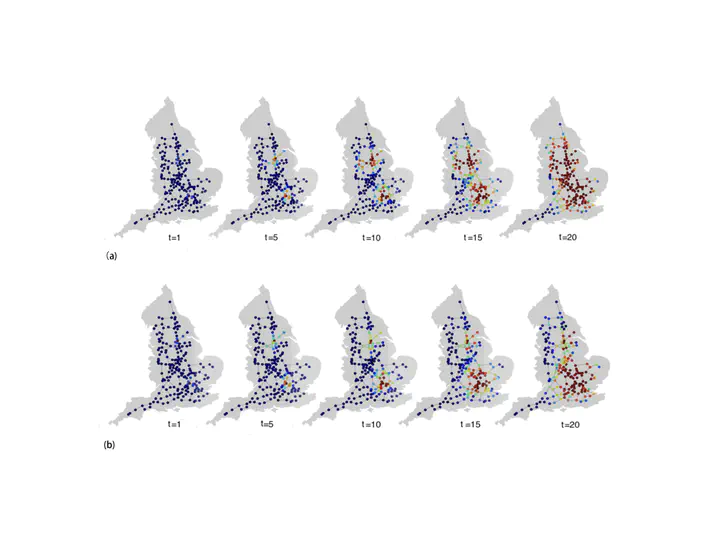Competition, Collaboration, and Optimization in Multiple Interacting Spreading Processes

Abstract
Competition and collaboration are at the heart of multiagent probabilistic spreading processes. The battle for public opinion and competitive marketing campaigns are typical examples of the former, while the joint spread of multiple diseases such as HIV and tuberculosis demonstrates the latter. These spreads are influenced by the underlying network topology, the infection rates between network constituents, recovery rates, and, equally important, the interactions between the spreading processes themselves. Here, for the first time, we derive dynamic message-passing equations that provide an exact description of the dynamics of two, interacting, unidirectional spreading processes on tree graphs, and we develop systematic low-complexity models that predict the spread on general graphs. We also develop a theoretical framework for the optimal control of interacting spreading processes through optimized resource allocation under budget constraints and within a finite time window. Derived algorithms can be used to maximize the desired spread in the presence of a rival competitive process and to limit the spread through vaccination in the case of coupled infectious diseases. We demonstrate the efficacy of the framework and optimization method on both synthetic and real-world networks.